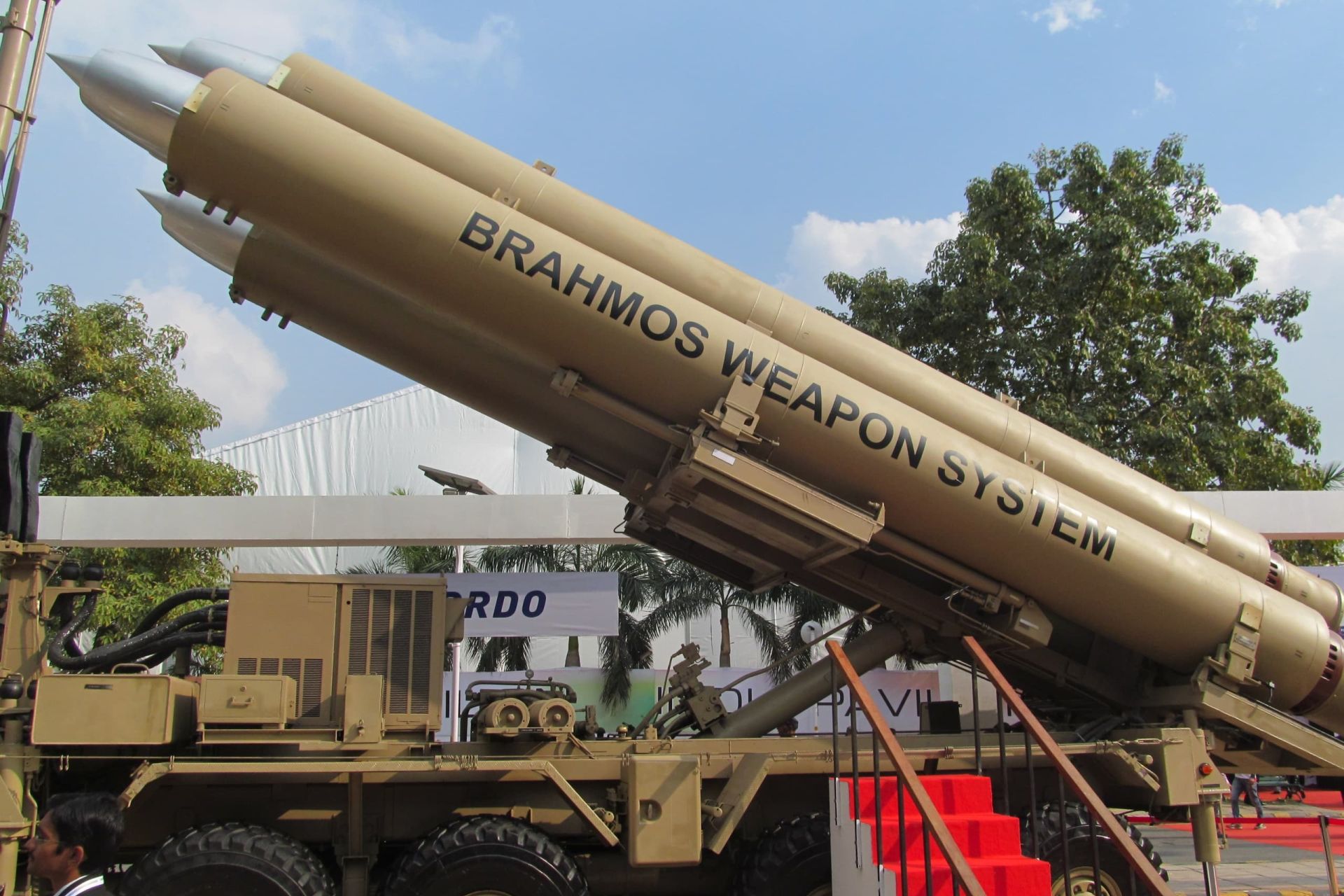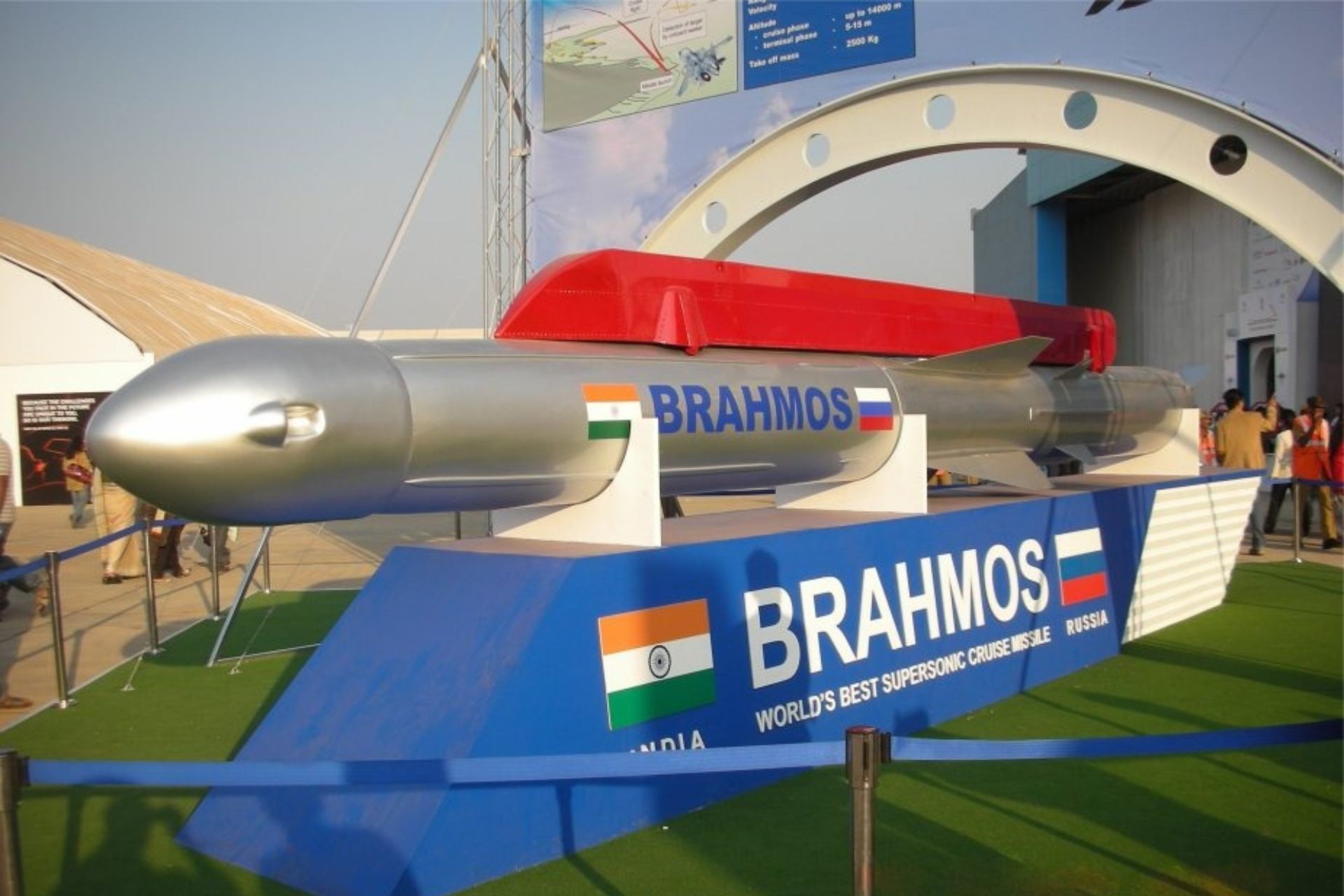Breaking News
Influence Struggle in Indo-Pacific: Indonesia May Strengthen Its Defense with Indian BrahMos Missiles After Philippines.
Indonesia is preparing to conclude a major defense agreement with India, aiming to acquire supersonic BrahMos missiles, thereby boosting its capability to address regional tensions. This potential deal follows the successful delivery of these missiles to the Philippines, marking a significant milestone for India in defense exports and strategic partnerships in Southeast Asia.
Follow Army Recognition on Google News at this link

In a context of increasing regional tensions, Indonesia views the acquisition of BrahMos as a way to enhance its maritime deterrence capabilities (Picture source: Indian MoD)
Recently, a high-level Indonesian delegation, led by Major General Yunianto from the National Resilience Institute of Indonesia, visited BrahMos Aerospace to explore potential military cooperation. During the visit, Atul Dinkar Rane, CEO and Managing Director of BrahMos Aerospace, provided a detailed presentation on the capabilities of the supersonic BrahMos missiles, reflecting Indonesia's growing interest in this advanced defense system.
The BrahMos missile, named after the Brahmaputra River in India and the Moscow River in Russia, is a supersonic cruise missile jointly developed by India and Russia. It is based on the Russian SS-N-26 (3M55 Oniks/Yakhont/Bastion) missile and is designed to serve as a versatile weapon capable of engaging both land and sea targets with high precision. Developed through a joint venture between India's Defence Research and Development Organization and Russia's Mashinostroyeniye, BrahMos Aerospace was established in 1998. The missile has been operational for several years and offers a range of capabilities suited to modern military needs.
The BrahMos PJ-10 stands out for its supersonic speed, ranging from Mach 2.0 to Mach 2.8, depending on the cruising altitude. This high speed, combined with stealth technology, makes the missile difficult to intercept and enhances its striking power. It is also equipped with an inertial navigation system (INS) for maritime targets and a combination of INS and GPS for land targets. Terminal guidance is provided by an active/passive radar system, ensuring high accuracy.
Different versions of the BrahMos offer a range of 300 to 500 km, depending on the launch platform. Powered by a solid-fuel boost motor and a liquid-fueled ramjet sustainer, the missile can be launched from land, air, sea, and even underwater platforms. The land and sea-launched versions measure 8.2 meters in length, carry a payload of 300 kg, and have a launch weight of 3,000 kg. The air-launched version is lighter, at 8.0 meters in length, carrying a 200 kg payload, and weighs between 2,200 and 2,500 kg. It is primarily launched from aircraft like the Indian Air Force's Su-30 MKI.
BrahMos missiles can be equipped with either a high-explosive (HE) semi-armor-piercing warhead or a submunition payload weighing between 200 and 300 kg. They can be launched from vertical launch systems, ramp launchers, or, in the case of the submarine version, from underwater vessels. In 2013, the missile was successfully tested from a submerged barge, proving its capability to be deployed on missile-armed submarines.

The Philippines received Indian-made BrahMos supersonic cruise missiles on April 19, 2024, marking the first time these missiles have been exported internationally. (Picture source: Philippines Army)
India and Russia are also collaborating on a hypersonic variant of the BrahMos, known as BrahMos-II. This new version will be powered by a scramjet engine, allowing it to reach speeds exceeding Mach 5, classifying it as a hypersonic missile. Russian officials have confirmed that this version will achieve hypersonic speeds using a next-generation fuel currently under development.
In a context of increasing regional tensions, Indonesia views the acquisition of BrahMos as a way to enhance its maritime deterrence capabilities. The missile, already in use by countries such as India and Vietnam, has proven effective in coastal defense and precision strikes. In 2016, India agreed to sell BrahMos missiles to Vietnam after securing membership in the Missile Technology Control Regime (MTCR). The export versions are limited to a range of 290 km to comply with MTCR restrictions, though this does not diminish their operational effectiveness.
Should the Indonesia-India deal come to fruition, it would strengthen India's position in the Southeast Asian defense market, following the agreement with the Philippines. It would also represent a new step in India's efforts to expand defense exports while enhancing military cooperation with ASEAN nations.
Against the backdrop of rising regional tensions in Asia, India and the Philippines have also deepened their defense cooperation, particularly through the supply of BrahMos supersonic cruise missiles. This partnership aligns with a broader strategy to counter China's increasingly aggressive influence in the South China Sea, where Beijing's expansionist strategies have raised significant concerns among its neighbors.
At the fifth meeting of the Joint Defense Cooperation Committee held in Manila, Indian Defense Secretary Giridhar Aramane praised the Philippines' efforts to modernize their armed forces through the "Self-Reliant Defense Posture" law. This initiative echoes India's vision for "Aatmanirbhar Bharat," a program aimed at promoting self-reliance in India's defense sector.
In this context, India has proposed strengthening collaboration with the Philippines through the joint development and production of defense equipment. Such an initiative would not only enhance the military capabilities of both nations but also provide a stronger response to China's increasingly militarized activities in the region. This proposal reflects New Delhi's intent to align with other states to safeguard their strategic interests in the face of Chinese expansion.

Brahmos supersonic cruise missile (Picture source: Politexpert)
In response, Philippine Undersecretary for Defense Irineo Cruz Espino expressed interest in forming long-term partnerships with India, particularly in securing reliable defense supply chains. This collaboration could also enhance regional resilience against China's technological and military dominance while diversifying the Philippines' military procurement sources.
The Philippines have recognized the success of India's defense industry indigenization model, which allows India to produce advanced weapons systems for domestic use and export. The delivery of BrahMos missiles to the Philippines, under a $375 million agreement signed in 2022, is a concrete example of this bilateral cooperation. These missiles, capable of striking targets at a range of 290 km, significantly boost the Philippines' coastal defense capabilities against maritime incursions in the South China Sea.
Moreover, during the meeting, India and the Philippines emphasized their commitment to strengthening defense ties through multilateral forums such as ASEAN. The Philippines' designation as India's coordinator for the ASEAN Defense Ministers' Meeting reflects both countries' desire to deepen strategic cooperation and unite against common threats posed by China's growing influence in the Indo-Pacific region.
This defense alliance between India and the Philippines extends beyond arms supply, encompassing the exchange of strategic information and mutual support for achieving self-reliance in defense production. The operationalization of information sharing on navigation and the upcoming opening of a defense wing at the Indian Embassy in Manila illustrate both countries' intent to forge long-term synergies.
Ultimately, this growing cooperation between India and the Philippines, two Asian powers facing Chinese pressure, aims to form a united front against Beijing's geopolitical ambitions. By joining forces to develop their defense capabilities, these two nations are sending a clear message: they are ready to defend themselves against any regional domination attempts and preserve stability in the Indo-Pacific.


























